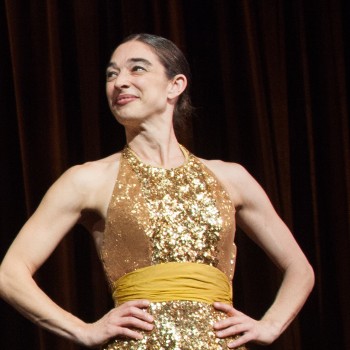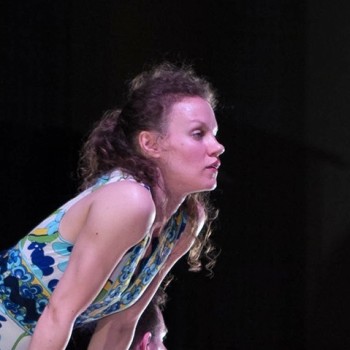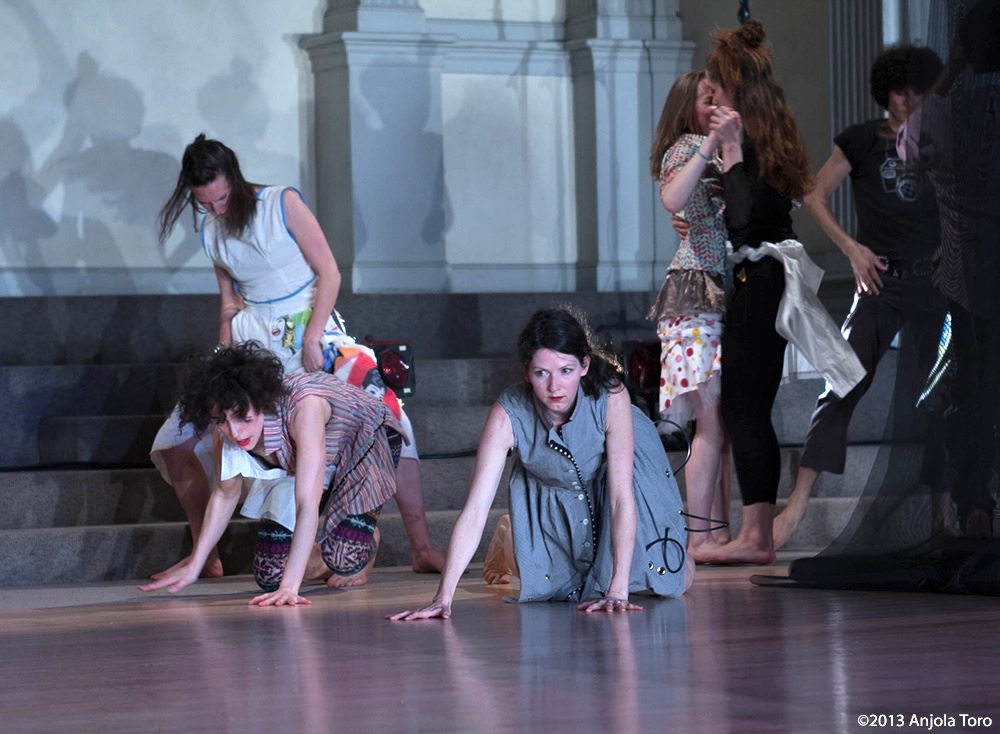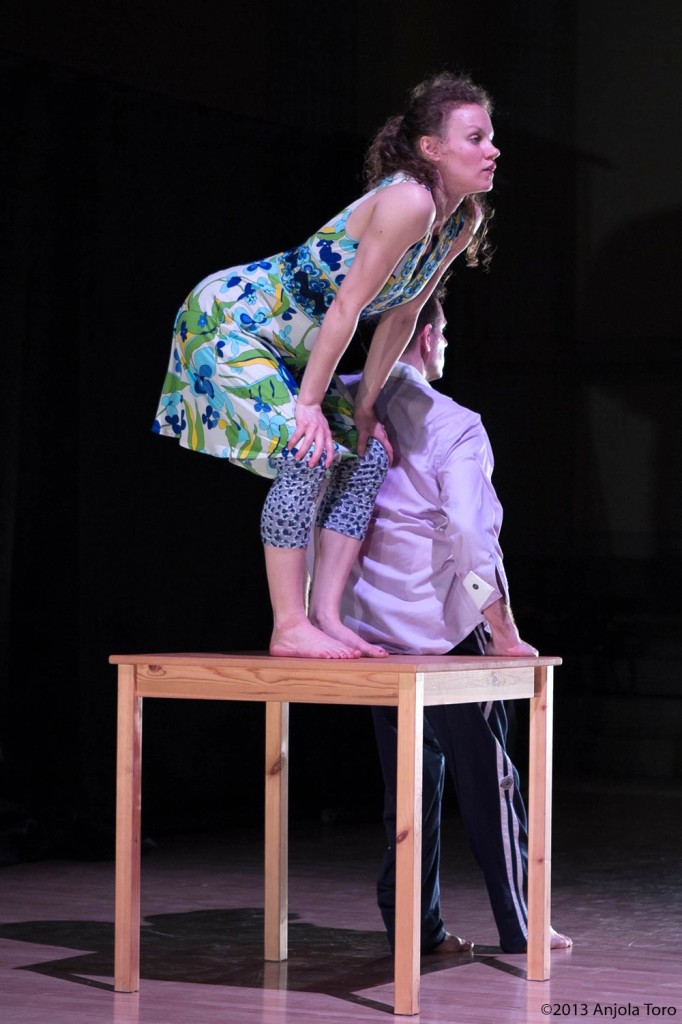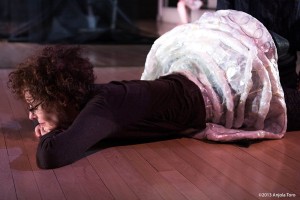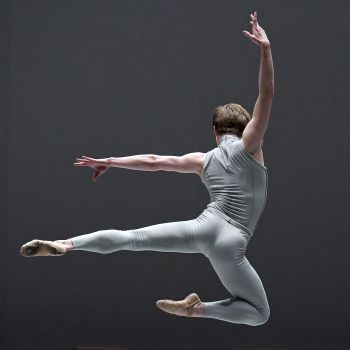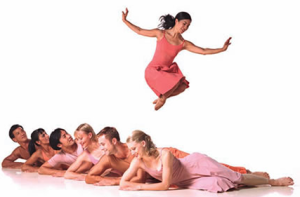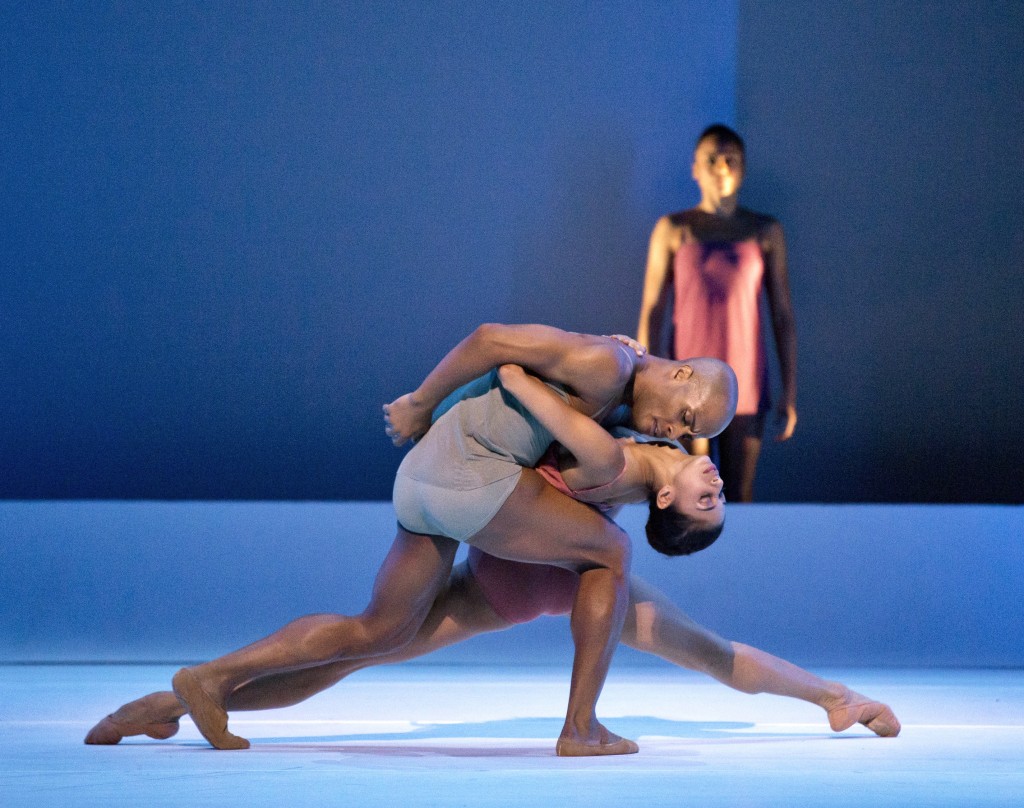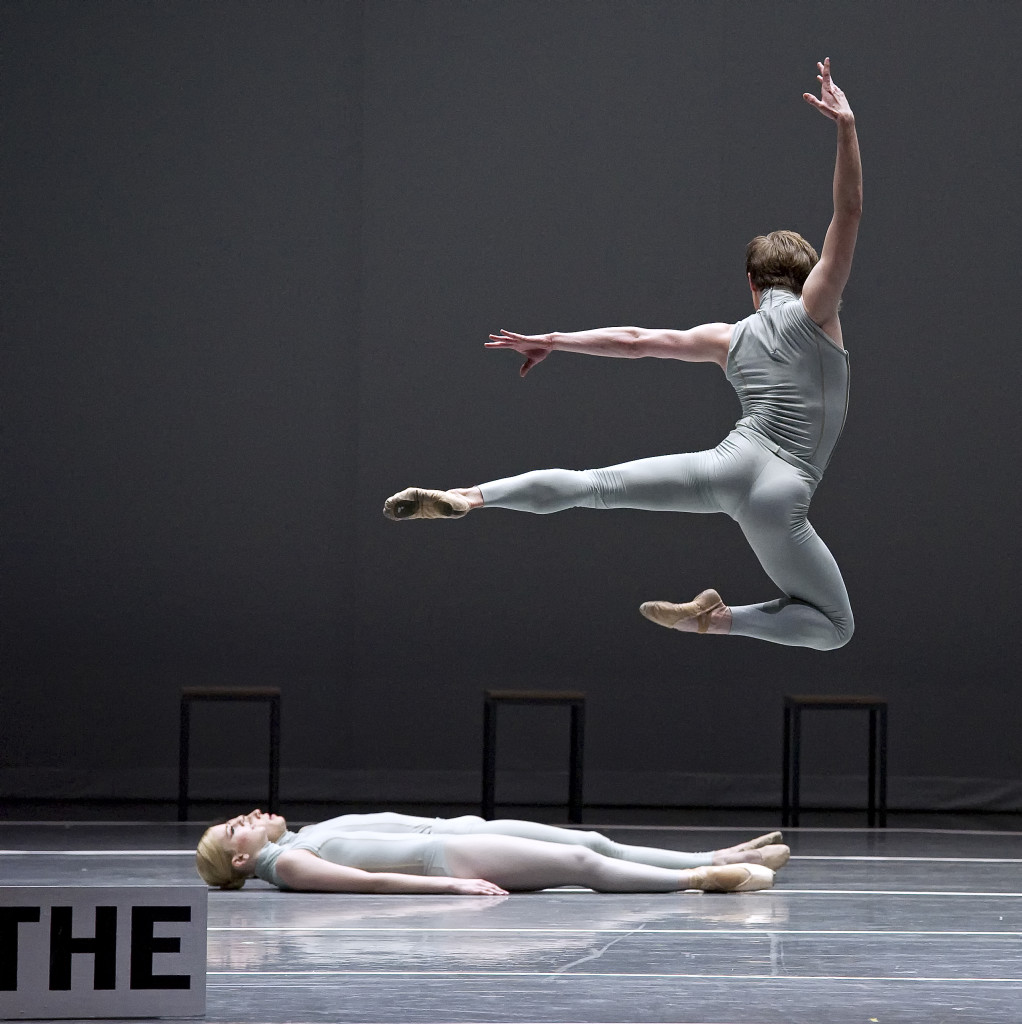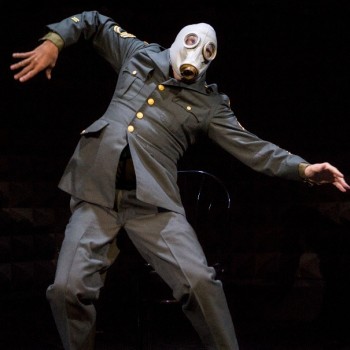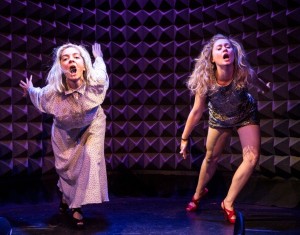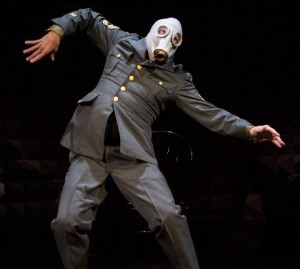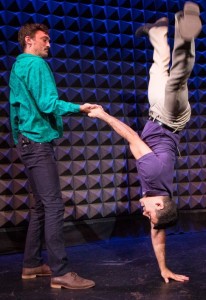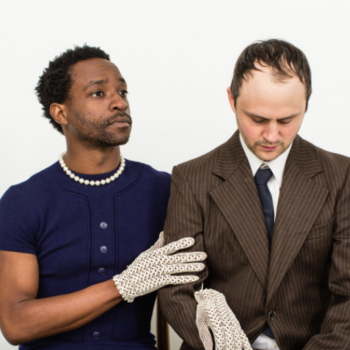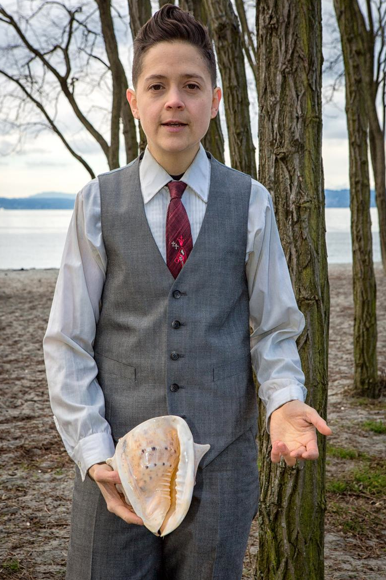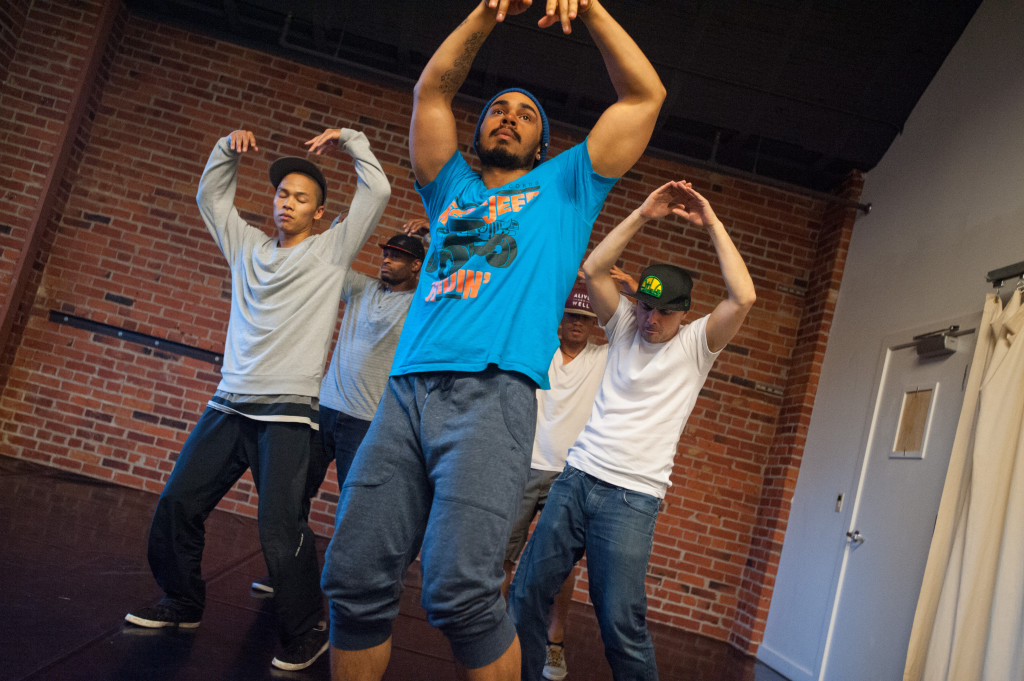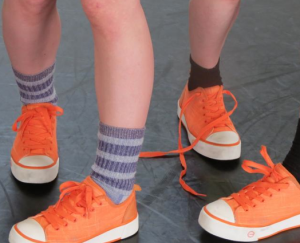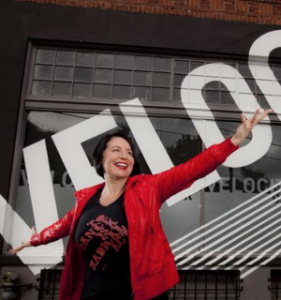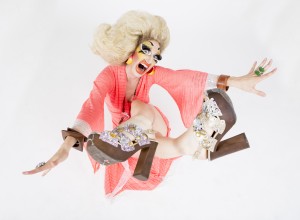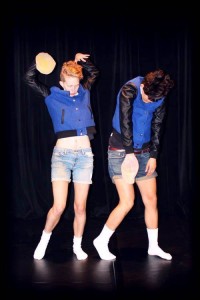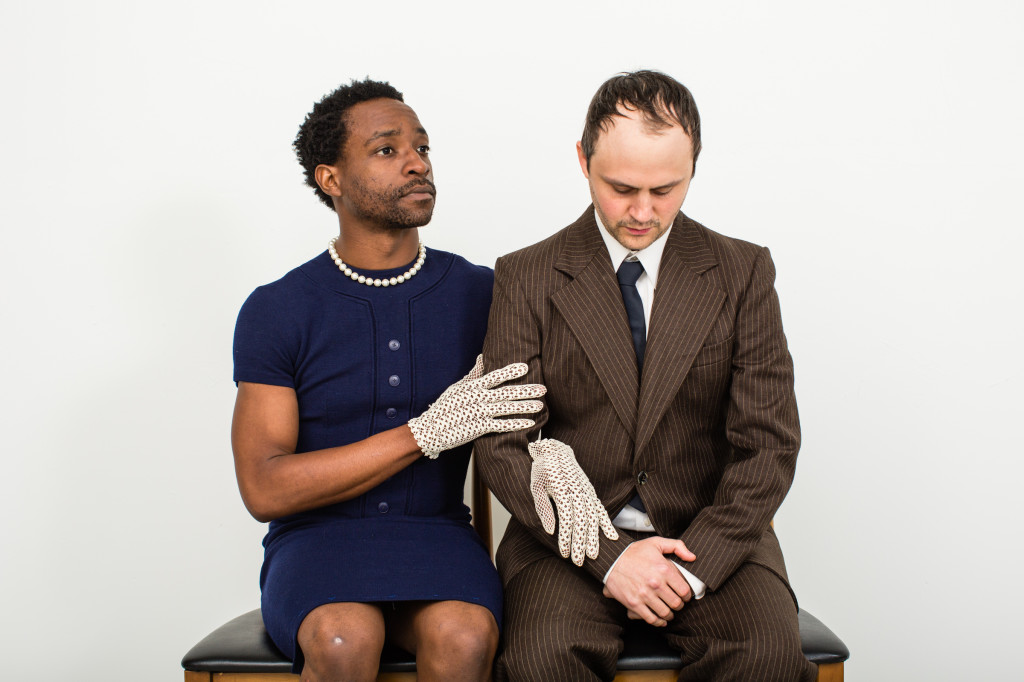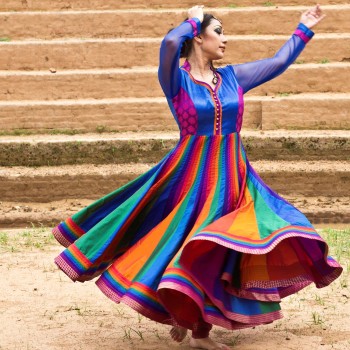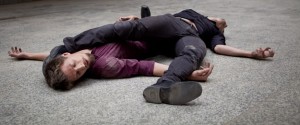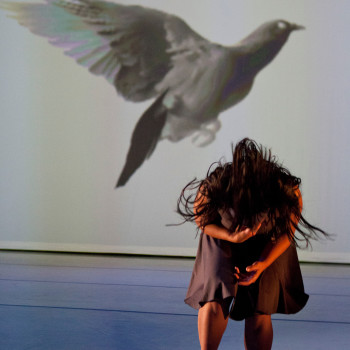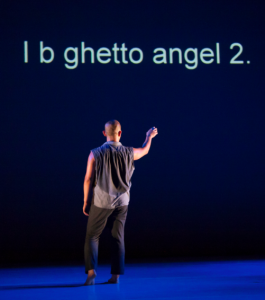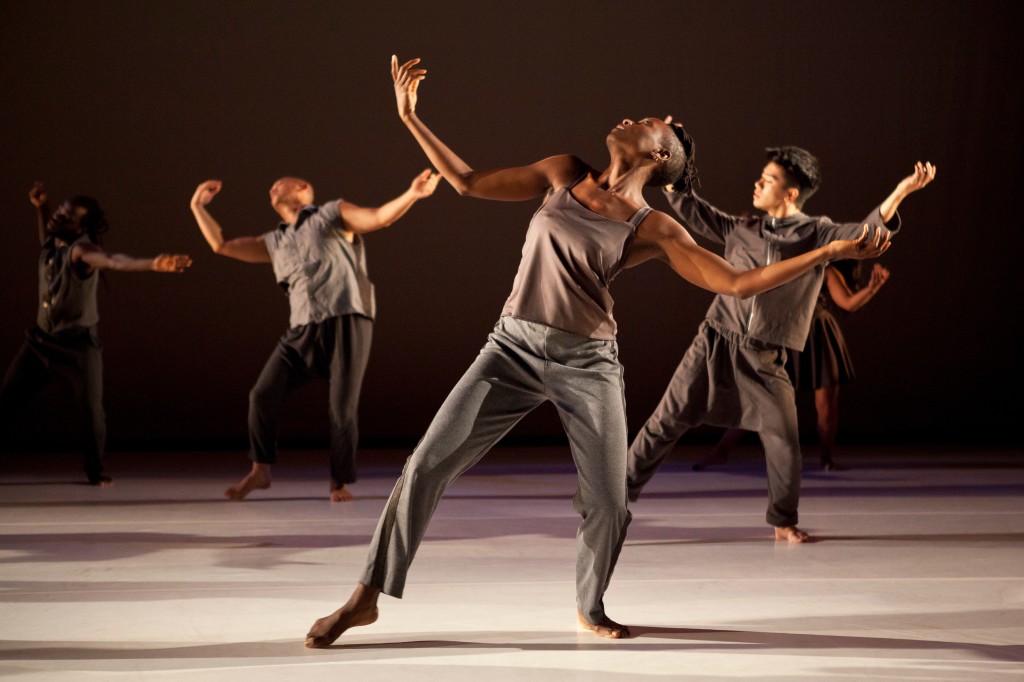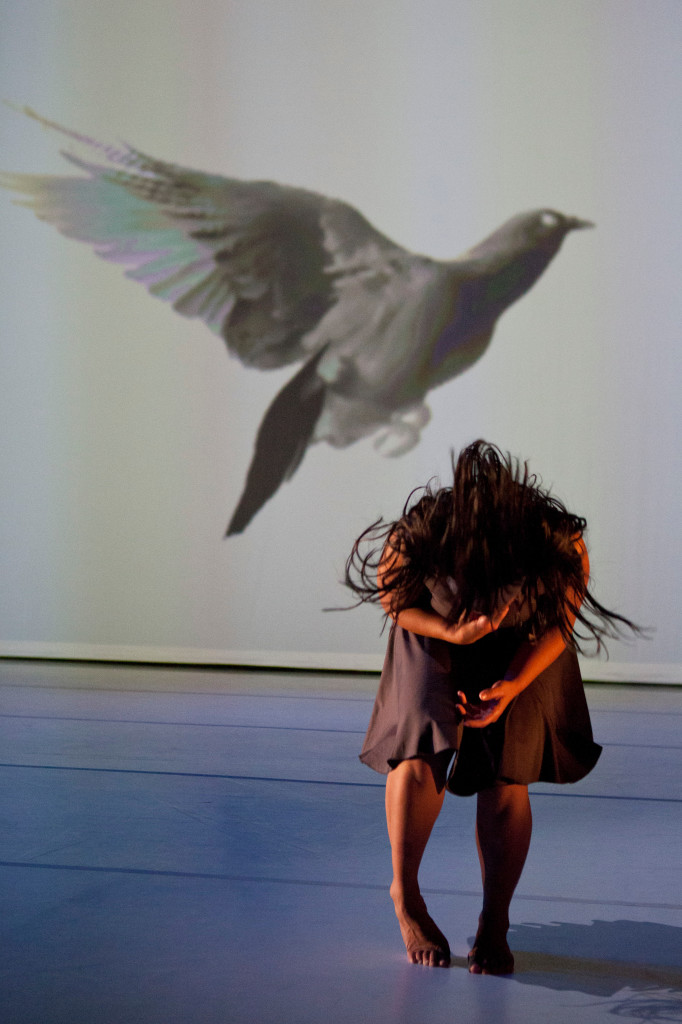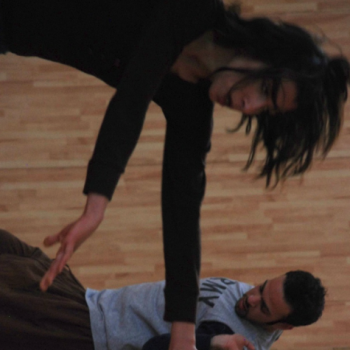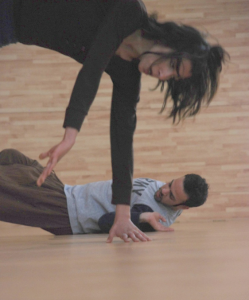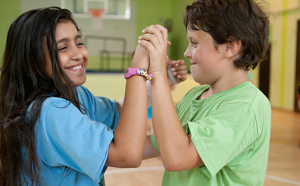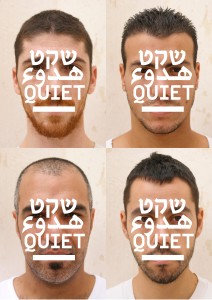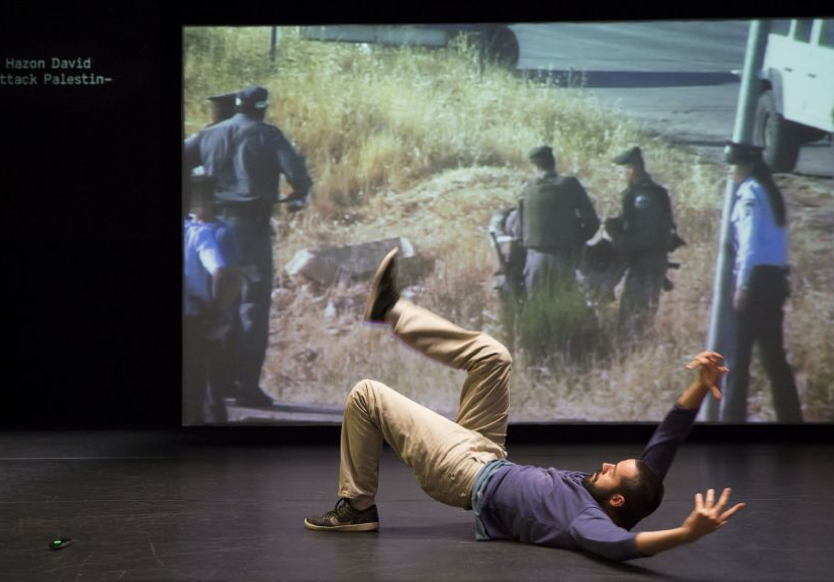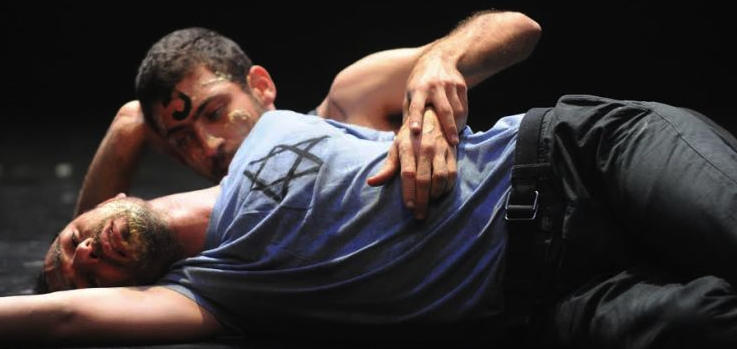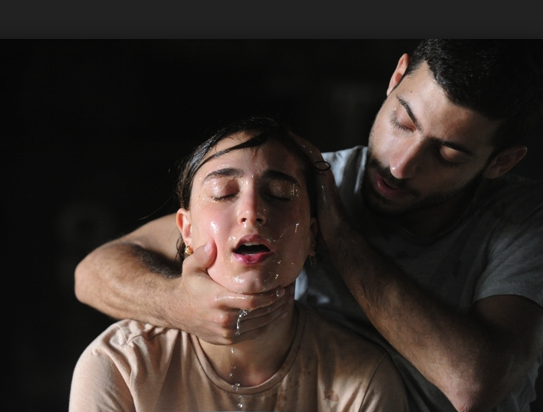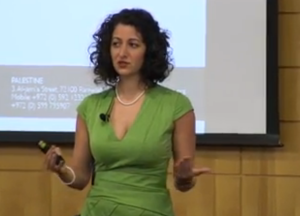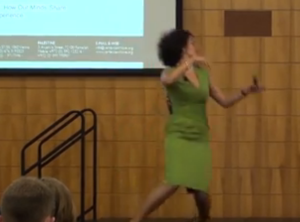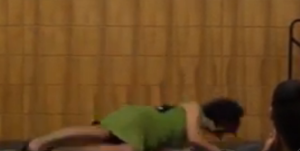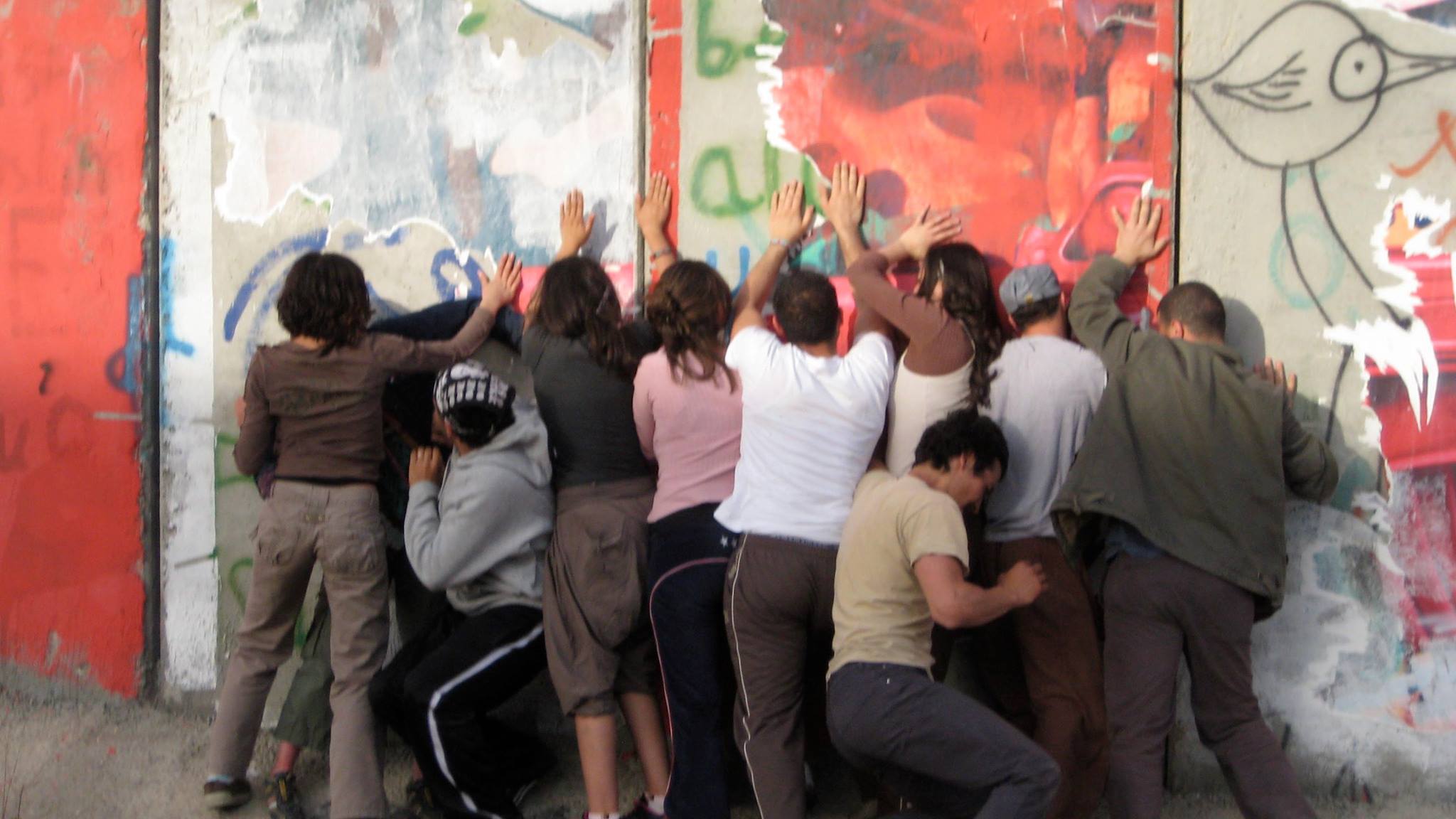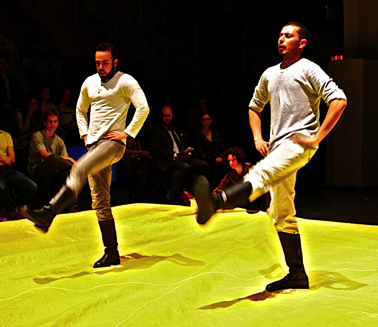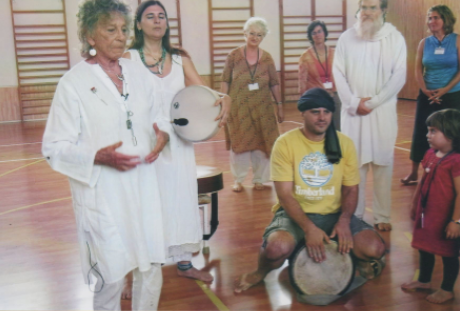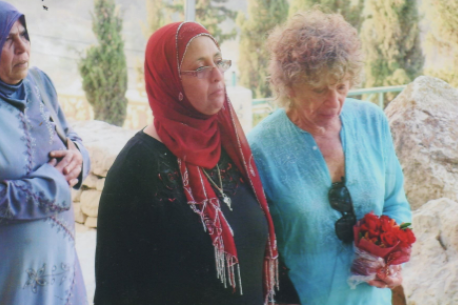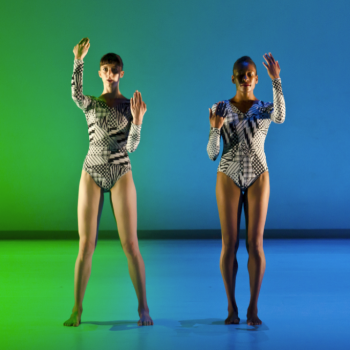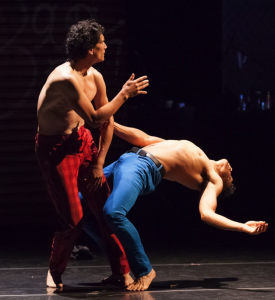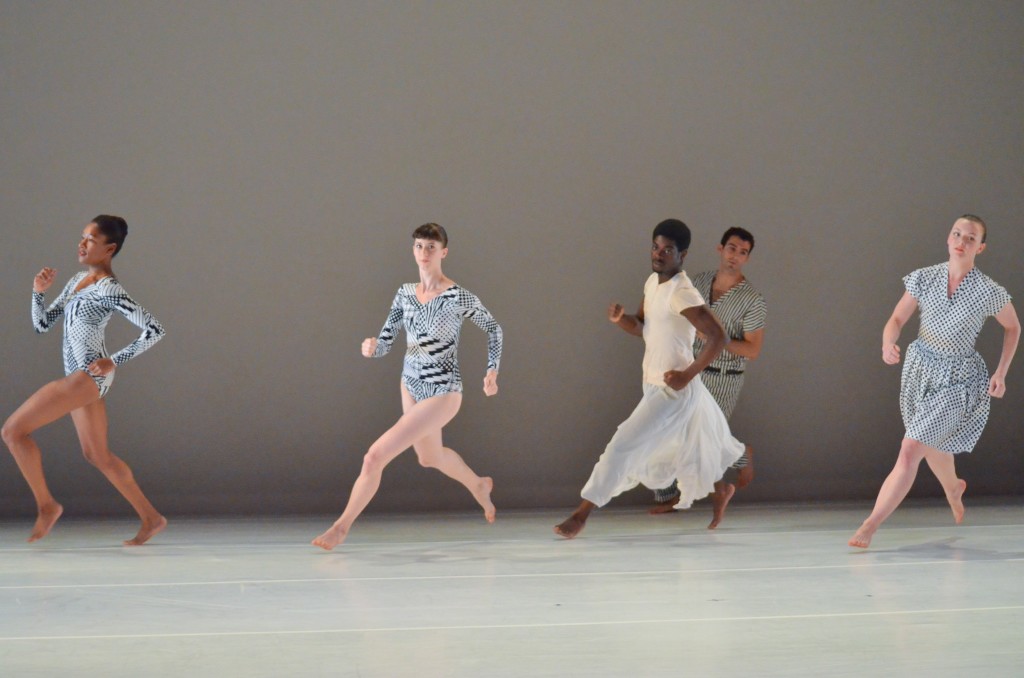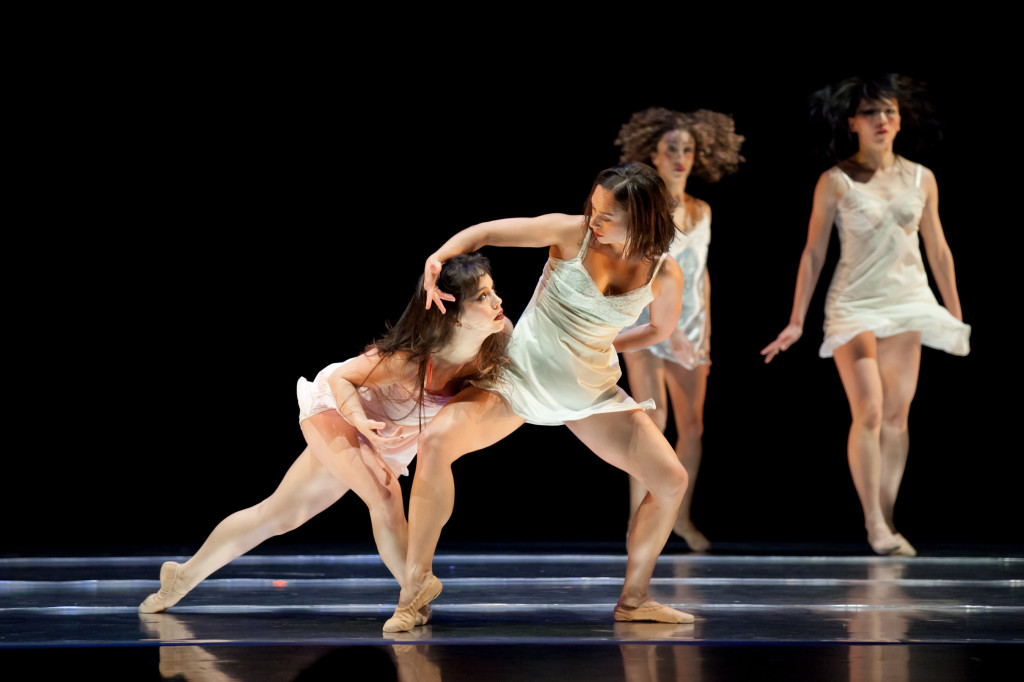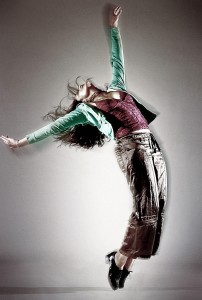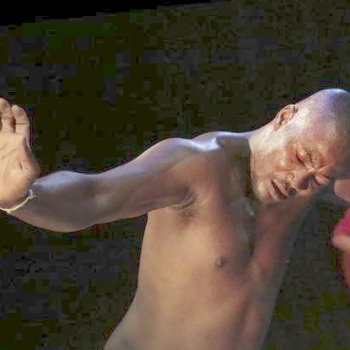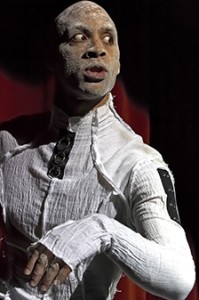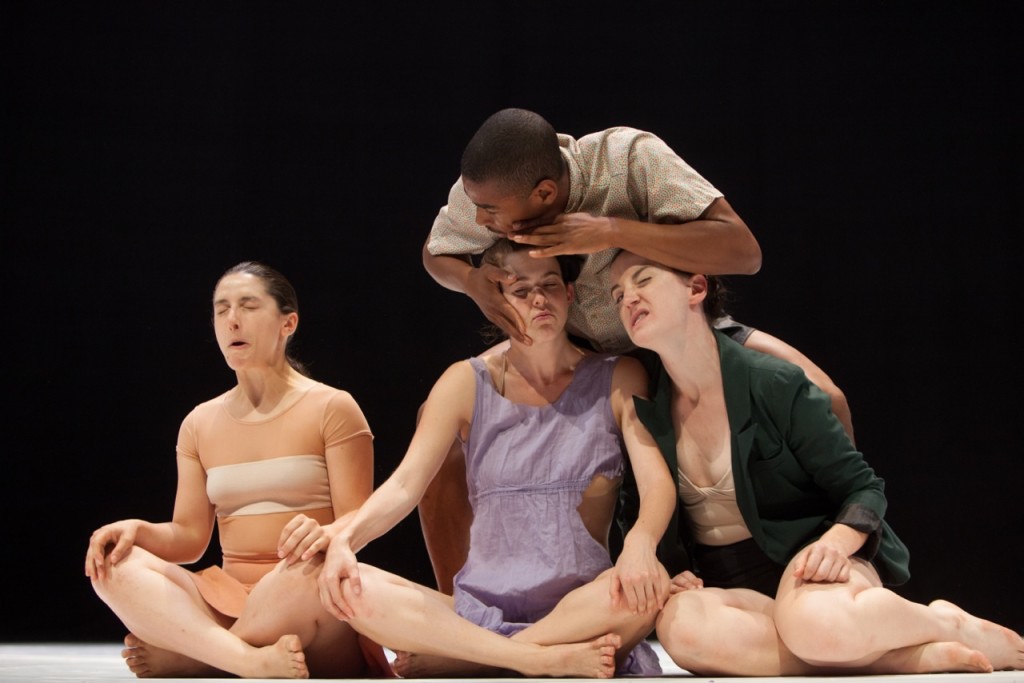Whether or not you’re familiar with Ira Glass’s pitch-perfect storytelling on This American Life, you’re in for a treat if you can catch his act on its 30-city tour. Instead of asking other people questions, he’s talking about his own life. And instead of just talking, he is dancing too.
The famous radio personality has teamed up with two dancers who are as funny and curious—and goofy—as he is: choreographer Monica Bill Barnes and dancer Anna Bass. Three Acts, Two Dancers, One Radio Host is a delicious show, an excuse to tell stories embellished by dance, and a chance for general audiences to see into dance.

Anna Bass, Ira Glass, Monica Bill Barnes, photo by Adrianne Mathiowetz
The boyish, wonder-full side of Glass that we hear over the radio blossoms when he joins Barnes and Bass in step-kicks and baton twirling. How can an untrained person join two professional dancers and not make a fool of himself? First, he laughs at himself before anyone else does. Second, it’s the timing. He’s learned a thing or two from orchestrating his show for almost 20 years. When he’s telling us a story, he plucks the iPad as though it were a harp, tapping it with a flourish to usher in some music or another voice at just the right moment. That sense of theatrical timing enables him to join Barnes & Bass in some of their numbers—and to boost their theatricality.
In his Act II monologue, he is nicely awestruck by the commitment and passion of dancers. After noting that Monica and Anna started lessons at ages 7 and 5, he asks the audience: “How old were you when you starting training for your job?”
The cleverly told stories alternate with dancing, and all three seem to be bursting at the seams to bring you this fun stuff. As jolly as all this is, the show slows down and dips into something deeper. When Glass was talking about a husband taking care of his dying wife, Barnes & Bass stood on a table set with dishes, not moving. Suddenly one would fall toward the other, allowing the dishes to clatter to the floor.
Naturally, the show ends with a big show number, blasted confetti and all.
Click here for the complete info on the tour, which continues next Saturday in Houston and travels to points west, Midwest, and Miami.
Around the Country Uncategorized what to see Leave a comment